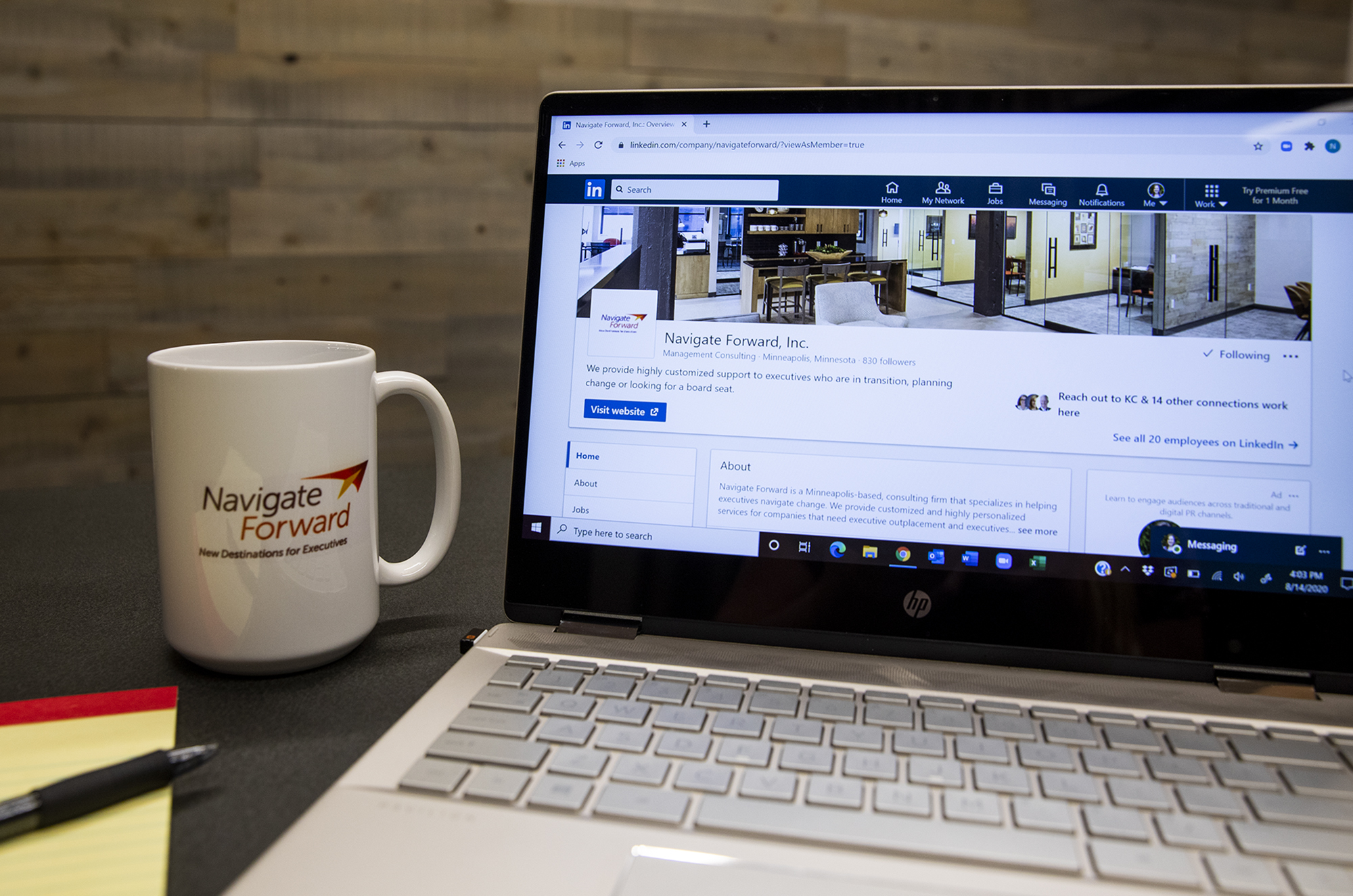More than 700 million professionals use LinkedIn for networking, learning, collaboration and career advancement. Senior leaders, however, often assume the platform applies more to their direct reports than to their own needs or interests. It’s a common misconception that Richard Dodson, Executive Consultant and LinkedIn Practice Lead at Navigate Forward, is eager to challenge.
“LinkedIn is no longer optional for executives,” Dodson explained. “If you’re not showing up regularly on the platform, you’re missing the opportunity to interact with your professional community and to build your reputation with people of influence.”
LinkedIn can help executives to:
- Grow your professional network
- Establish thought leadership in your field
- Share your company’s mission and message
- Attract new customers and great talent
- Stay in touch with colleagues and professional connections
- Stand out as a candidate for leadership roles and board of director positions
“It’s a valuable tool for all stages of your career—not just when you’re actively seeking work,” he added.
Numerous Ways to Find Value
Convincing skeptical executives of LinkedIn’s value often starts by changing your perception of the platform. It’s far more than digital want ads or a place to be found by recruiters. Dodson considers it an essential tool that leaders should use to cultivate relationships and showcase your skills, experience and subject matter expertise.
It’s not, however, a one-way street.
“Those who find the most long-term value focus on meaningful conversations and genuinely helping others.”
“Another misconception about LinkedIn is that it’s only for self-promotion,” he explained. “In reality, those who find the most long-term value treat their online interactions just like their face-to-face relationships. They focus on meaningful conversations and genuinely helping others.”
This is the approach Dodson emphasizes in his workshop, “LinkedIn Mastery for Executives.” The hands-on training encourages executives to set goals, be authentic on the platform and use a “pay it forward” mentality.
Three Valuable LinkedIn Activities for Executives
Maximizing LinkedIn’s potential goes beyond creating a robust profile. Just as real life interactions require time and attention, senior leaders must regularly show up on LinkedIn if you want your presence to pay off.
Dodson recommends executives devote fifteen minutes per day to LinkedIn. The platform is ideal to support these three activities:
1. Build Your Network
Connections drive quality interactions on LinkedIn. But, it isn’t a contest to get the most contacts. Dodson urges senior leaders to create a networking strategy to guide your efforts. Identify the best types of connections to meet your goals, then seek out those individuals.
“LinkedIn is no longer optional for executives. It’s a valuable tool for all stages of your career—not just when you’re actively seeking work.”
Personal touches are key. Dodson recommends customizing your invitations beyond LinkedIn’s default message. Once a connection accepts, send a note of thanks and invite them to engage in conversation with you. This level of care establishes the basis for a genuine relationship.
Thought leaders, influencers and “super-connectors” make valuable connections because they can unlock second- and third-degree relationships with other LinkedIn members. Linking with recruiters, past colleagues and other executives, as well as joining relevant groups, is also important; these links put you in touch with a broader community.
2. Deepen Relationships
With connections in place, LinkedIn becomes a hub for cultivating lasting relationships and supporting other professionals. Here, Dodson recommends a daily review of your LinkedIn feed and notifications. Take time to like, make comments and share your connections’ posts. Then, consider joining the conversation with a weekly update of your own.
Other ways to engage your network include:
- Congratulating your connections on their accomplishments and work anniversaries.
- Leaving unsolicited recommendations on the profiles of former coworkers.
- Forwarding valuable content directly to individuals.
By spending a few minutes minutes a day on the platform, you can engage your network in a substantive way.
3. Elevate Your Visibility
Thought leadership abounds on LinkedIn. Senior leaders can showcase your own subject matter expertise by curating valuable content on topics that matter to you (or your organization). This type of activity can build a powerful following, advance an important cause and demonstrate smart leadership skills.
“Using LinkedIn regularly makes it a strong professional habit and a natural part of your work week.”
Dodson recommends taking time to source and post articles, videos and podcasts that your network will find helpful. Then, consider publishing your own article or video.
Develop a Daily Habit
Worried that having a robust profile or being active online will signal colleagues or board members that you’re in job search mode? Dodson encourages senior leaders to overcome this fear.
“LinkedIn is a tool, and just like any tool, you’re in control of how and when you employ it,” Dodson said. “Using it regularly makes it a strong professional habit and a natural part of your work week, whether you’re thriving in your current position or considering your next opportunity.”
Ready for more LinkedIn tips? We include comprehensive and customized LinkedIn training for executives in every Navigate Forward engagement. Contact us to learn more.



